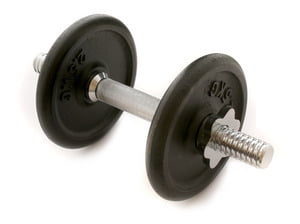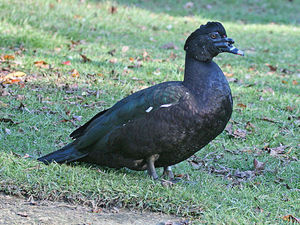This fern bore the label Aspodium caponse in the McLellan display as this is the name under which it is generally sold. However, under any name it is a most handsome plant. The fronds are a deep glossy green, firm textured with an abundance of substance, and they last well when cut, making them fine material for arrangements. The plant stood about eighteen inches tall in the display but this fern will reach a height of three feet with a little age and good care.
This fern does best in high shade but it will grow in full sun, if you don’t mind some burning of the fronds. This Leather-Leaf fern is found native in South Africa and New Zealand. It is a spading fern that grows in dense clusters with creeping brown rhizomes, similar to the Davallia. Both are members of the polypodiaceae family. The Davallia has several sub species of which D. bullata mariesii is widely grown in Japan, where it is sometimes called “Ball Fern.”
The Japanese train this fern into various shapes such as balls, bells, animals and dolls or any shape that strike the growers fancy. The two ferns above remind two of the “Bare’s Foot Fern” from tropical America which is widely grown locally in wire baskets lined with moss so the brown, creeping rhizomes can creep through the growing medium to cover the outside of the baskets. This fern is Polypodium aureum and it can be found in most nurseries where ferns are sold. One of the most useful ferns for my gardens is the Polystichum group which are usually referred to as native “Sword Ferns” as they are found in the wild along the mustranges of California.
Polystichum munitum is about the best known of the “Sword Ferns” as it can be found growing among the redwoods most everywhere in California. It has leathery, shiny, dark green fronds two to our feet long that make excellent cut material for flower arrangements. This fern is not too particular about soil or water but it will make a much more spectacular clump if it is given a well-drained soil heavily enriched with humus and plenty of water.
Polystichum setiferum is a low-growing fern from Australia. It has many forms but the one best known here is “Proliferum” that grows plantlets on the midribs of the older fronds giving these frond’s a dense, lacy look that is very charming.
This fern is sometimes referred to as the “Mother Fern” as the little plantlets can be pinched off and used for propagation. The polysticriums are funs garden plants for use in shaded rock gardens and for interplanting with tuberous begonias and other shade plants. Ferns are extremely easy to grew as their needs are simple and they are very able to adapt to existing conditions. All ferns like a rich friable loamy soil, a mixture of equal parts woodsy leaf mold, peat moss and Barden loam does the job. Make sure the area is well drained and an adequate amount of water will be available.
If you plan to grow a variety with creeping rhizomes such as the Hare’s Foot Fern, be sure to line the wire basket well with wet spaghmon moss before putting in the soil. Also ferns growing in baskets and pots will need to be watered much more often than those growing in the garden.
http://postharvest.ucdavis.edu/Produce/ProduceFacts/orn/leatherleaf.pdf


